Whether you are a hobby farmer, homesteader or rancher in Texas, here are 6 ranching tips to help you prepare before you bring your Texas longhorn calf home.
**UPDATED**
Let’s face it, cattle ranching is not for everyone. It’s certainly not an idea you suddenly wake up to one day and then go out shopping. Even if you have the basic necessities like water, feed and fencing on your acreage, deciding to raise a Texas longhorn calf and setting up your pasture for the first time can be quite daunting.
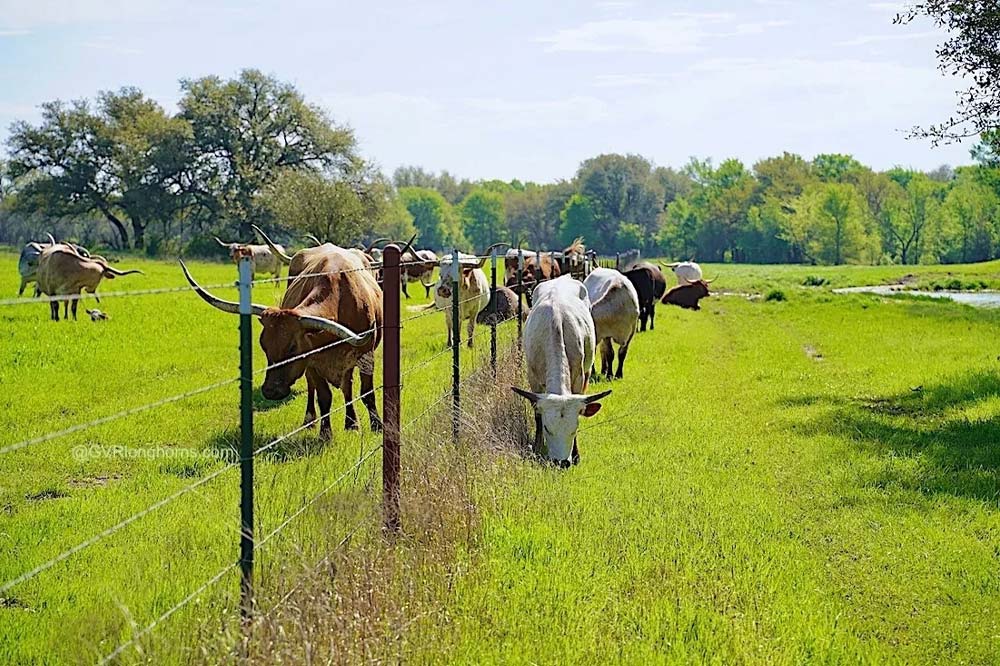
There are so many options out there to prepare your ranch or homestead for a Texas longhorn calf and even more so for a Texas longhorn cattle herd. We have been raising Texas longhorn cattle for close on 20 years and over the years we have modified and still change the way we do a few things. Our way works for us and may not be the best for you. But, rather than learn costly lessons from your own mistakes we have provided a breakdown based on our own Texas longhorn cattle ranching experience.
visit our SALEBARN at GVRlonghorns.com
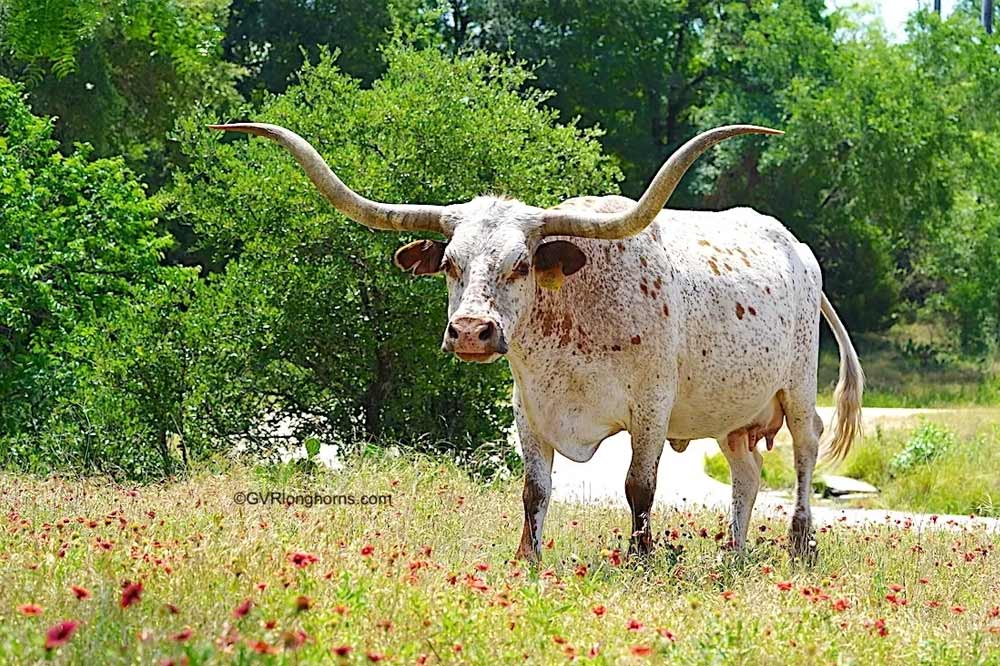
Here are 6 ranching tips in the form of questions to consider before you bring your Texas longhorn cattle home.
(Scroll down for links to resources in your area in Texas)
1.How many cattle should I have on my acreage?
Perhaps the most critical decision is how many cattle you purchase for your pasture.
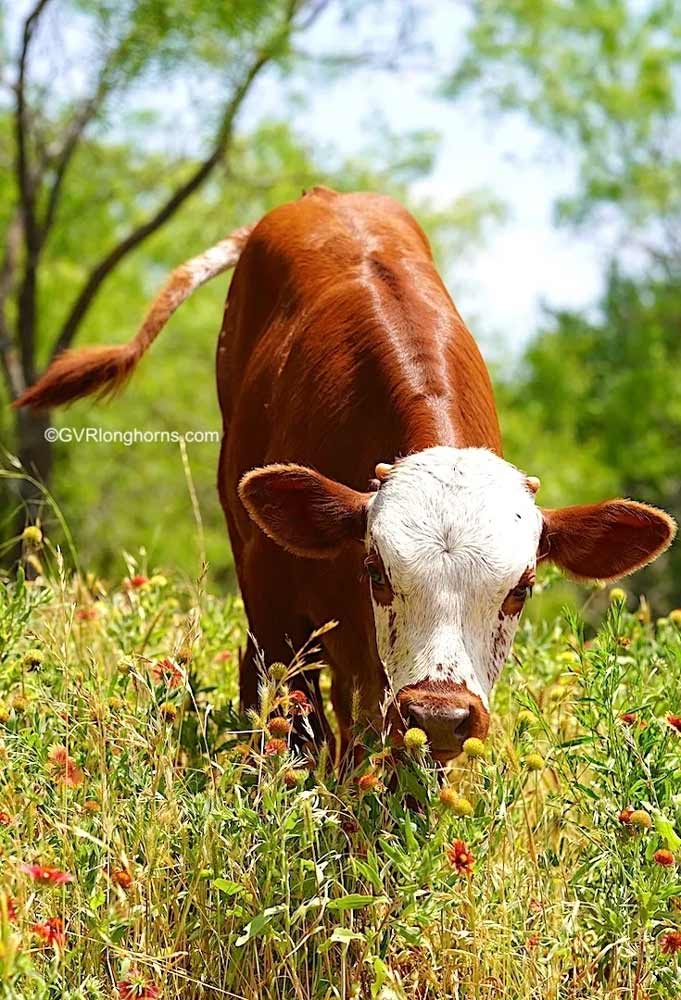
This decision is not entirely based on what your own preference is or what you think you can manage. On the one hand, if you plan to meet the Agricultural tax exemption requirements for your acreage, you will save money in taxes. (see our post Texas Longhorn Cattle – the sensible solootion to Ag exemption ).
On the other hand, the size of your herd must be constrained by how many cattle your land can actually support. The agricultural term for this is the stocking rate and in Texas, stocking rates vary and are dependent on:-
- Where in Texas your acreage is
- What type of pastures you have.
Call your local Texas Ag extension office for specific advice in your area.(see below for links)
A broad guideline for stocking rates in our area( Erath county) for one animal unit** is
- Managed/improved pastures > 2-6 acres
- Native grasslands > 15-20 acres
- Woodlands > 50-75 acres
**An animal unit (AU) = one 1000lb Texas longhorn cow with or without her longhorn calf under 6 months of age.
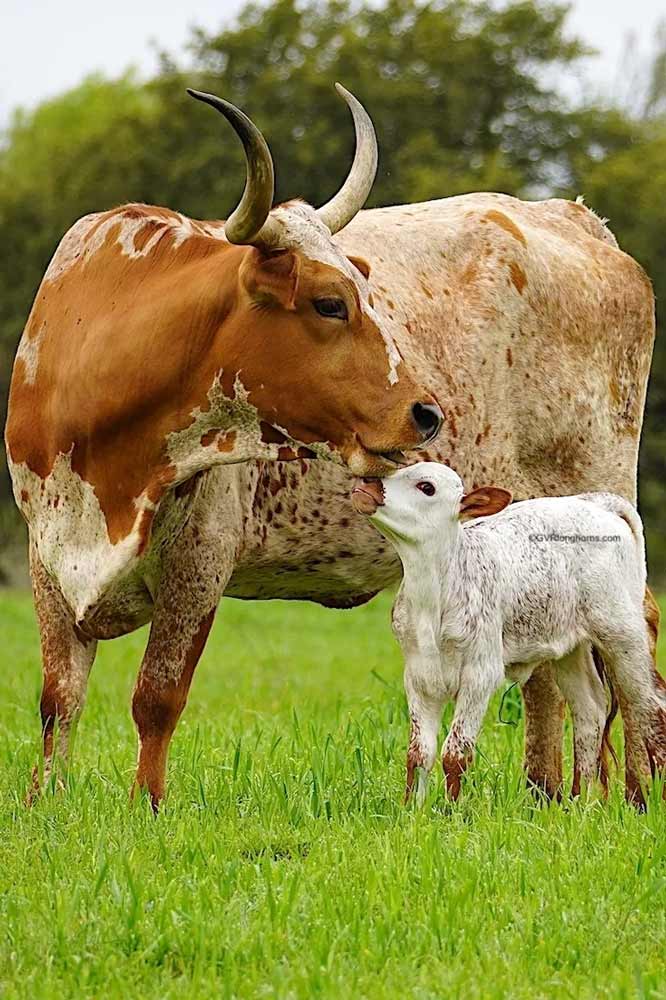
2. Do my pastures produce enough forage?

Texas longhorn cattle generally consume less than beef cattle and will eat a wider variety of vegetation species.

Nonetheless, pasture management throughout the year is good practice for keeping cattle healthy and maintaining their body weight. Overgrazing a pasture can also be costly.
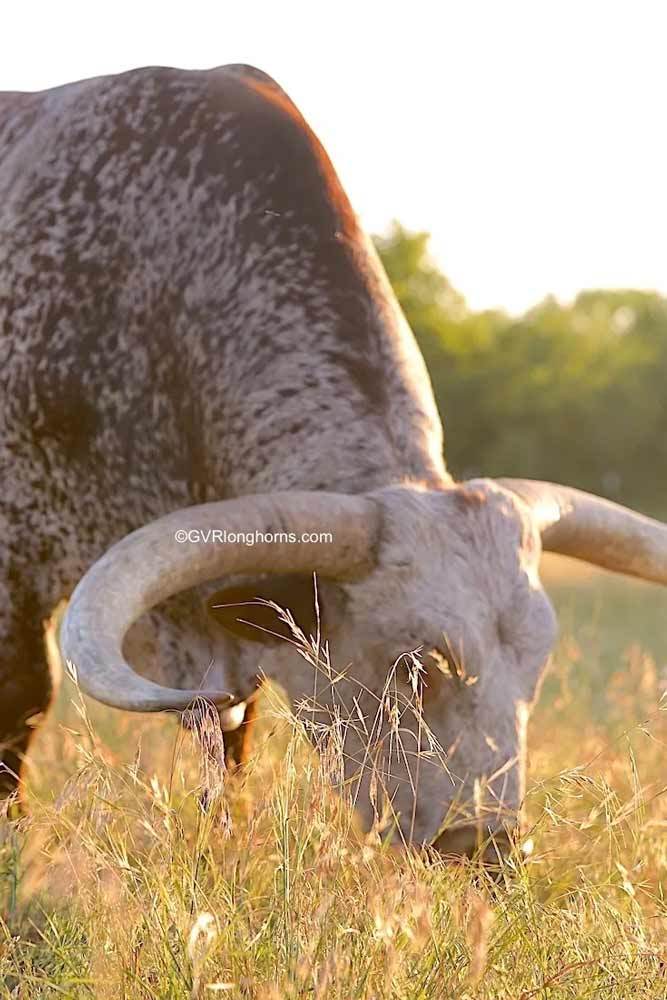
Overgrazing can happen easily if your pastures don’t have enough growth, even if you follow the stocking rates. Applying the principal “forage half and leave half ( ungrazed ),” will help ensure next year’s pasture growth. (Larry D. White and Allan McGinty)
In other words, the Carrying Capacity, or calculating how many animal units your pasture can support will save you in the long run. Even though these estimates may fluctuate because of extenuating factors like climatic conditions, it does help in forecasting a ranching budget . Whether you own 10 acres,100 acres, or even more, maintaining healthy animals and pastures is more cost effective than treating damaged fields and undernourished, sick animals. ( see links below for helpful resources)
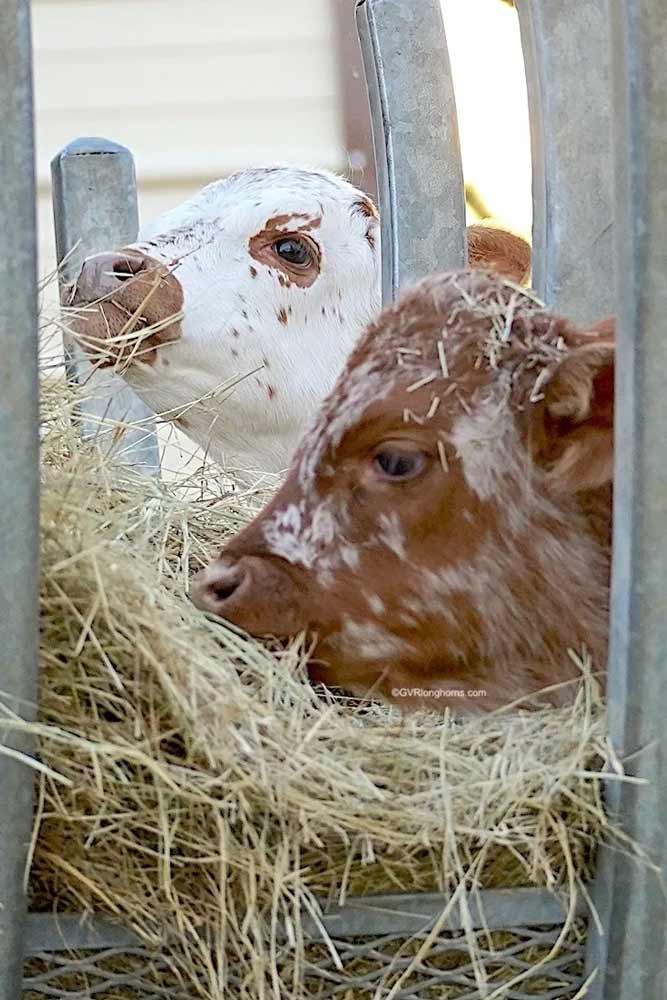
We run two separate herds of Texas longhorn cattle on hundreds of acres. Each herd is on a rotation pasture schedule over a minimum of three pastures through the year. Even so, with substantial acreage in Dublin, Texas, in winter, we supplement our Texas longhorn cattle herd’s feed with hay.
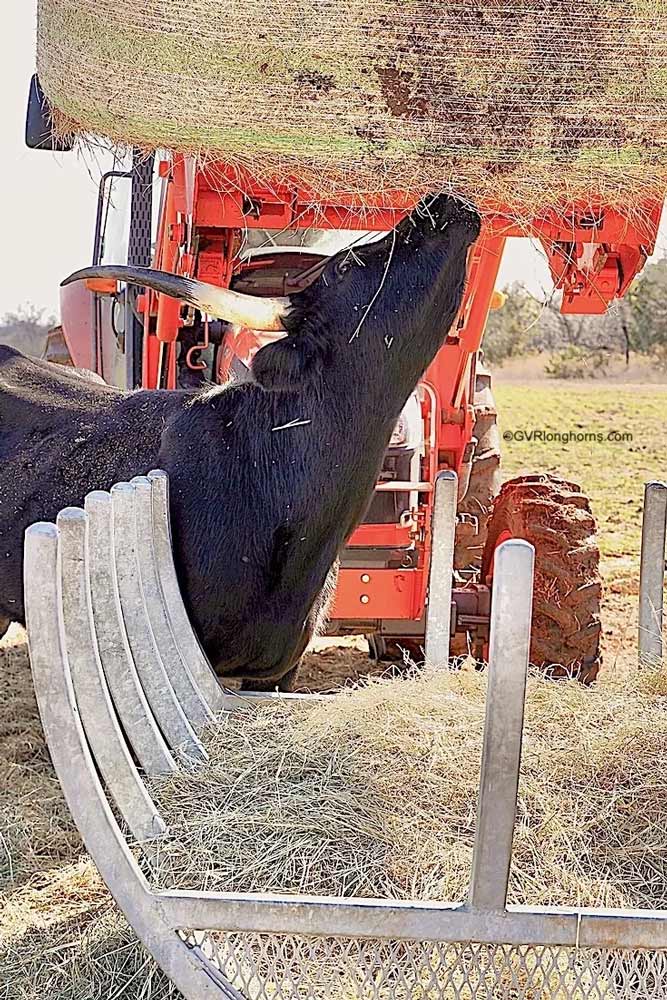
We use round bales rather than square bales of hay as they are more cost effective for our larger Texas longhorn herd. We also produce a portion of the hay consumed and have the equipment to move the hay as we need to but when we first started out we did not.
Explore the costs of hay and delivery options in your area, ahead of time, if you don’t have your own equipment.
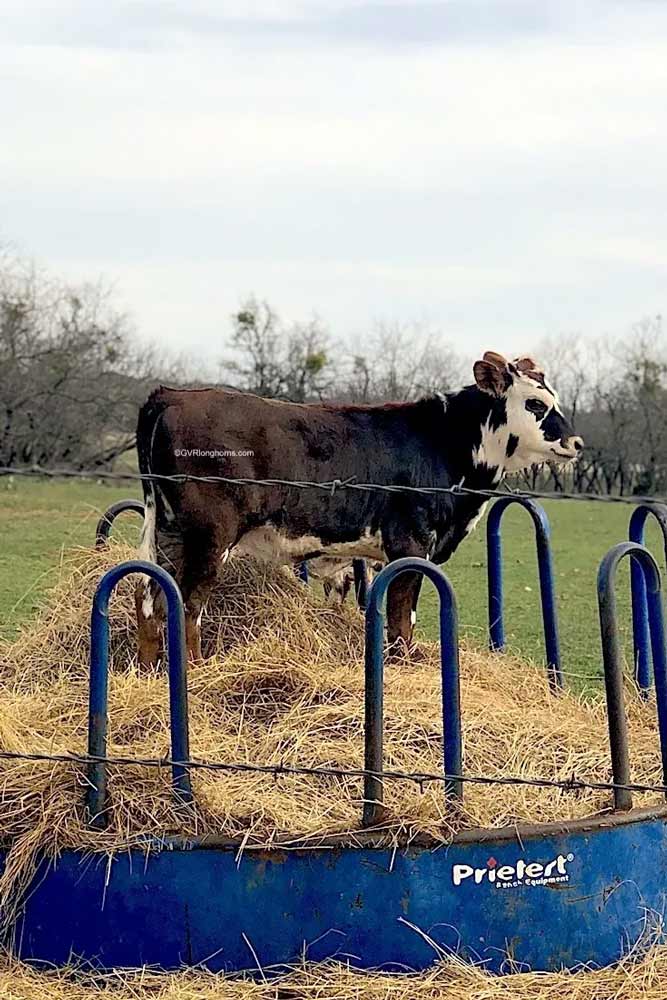
Additional supplement food costs
- Throughout the year we have salt and mineral licks available free choice in block form as well as granules for our Texas longhorn cattle. We also provide 24% protein tubs all year and especially in the late fall and winter, when we start feeding dry feed.

- From time to time for treats we hand out 20% protein cattle cubes, as well as sweet feed to socialize the calves.
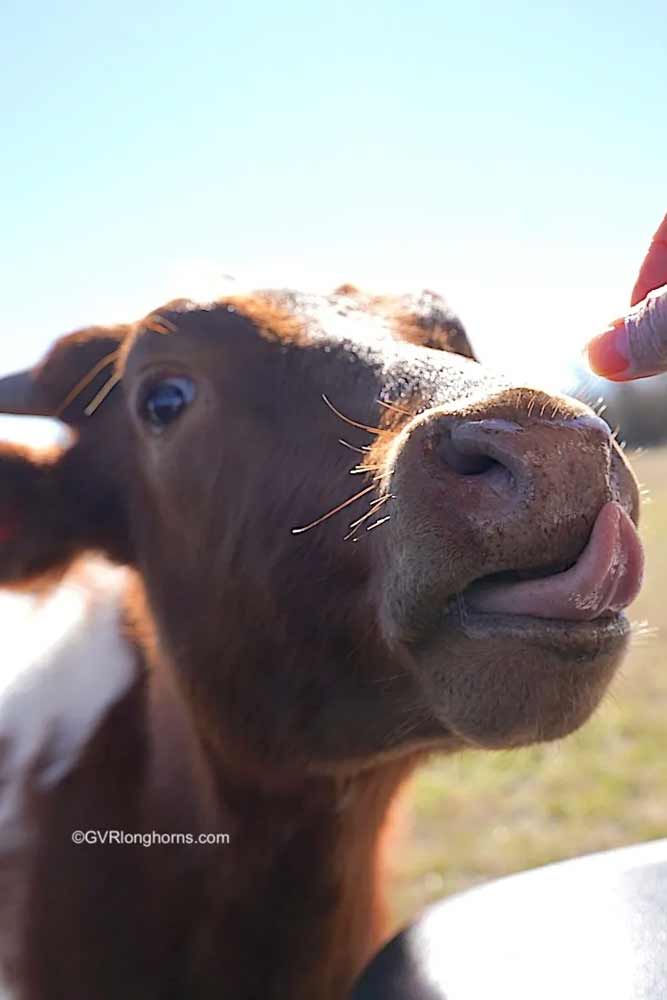
3. Is water accessible?
If you are lucky enough to have a natural creek running through your cattle ranch, you may have access to a natural source of water in your pastures.
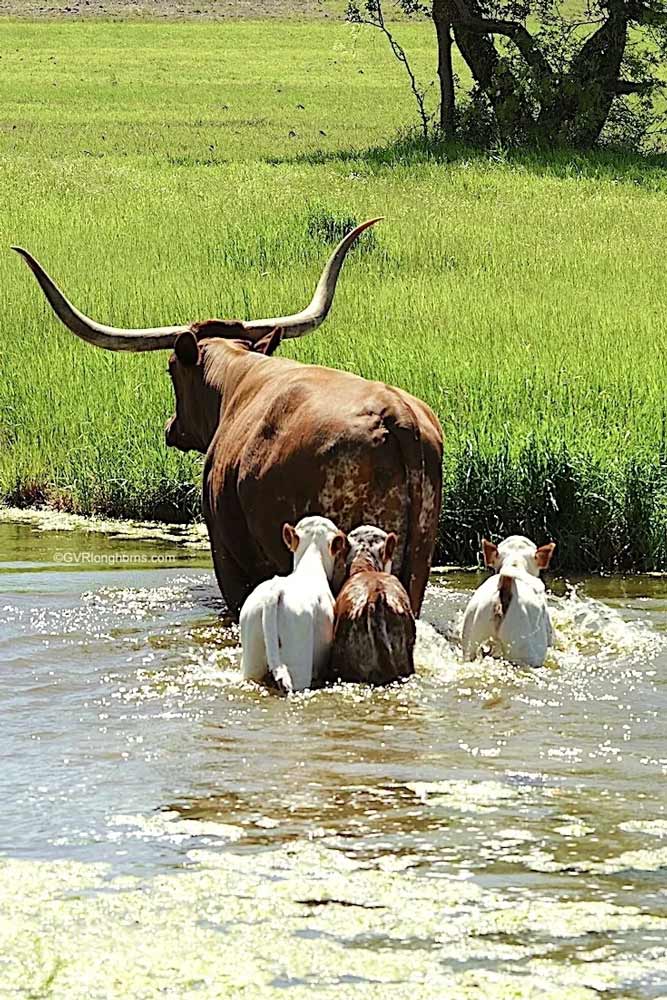
Texas longhorn cattle, as well as their calves, are sturdy on their feet and have no problems steering through creek bottoms even if the creek beds are rocky.
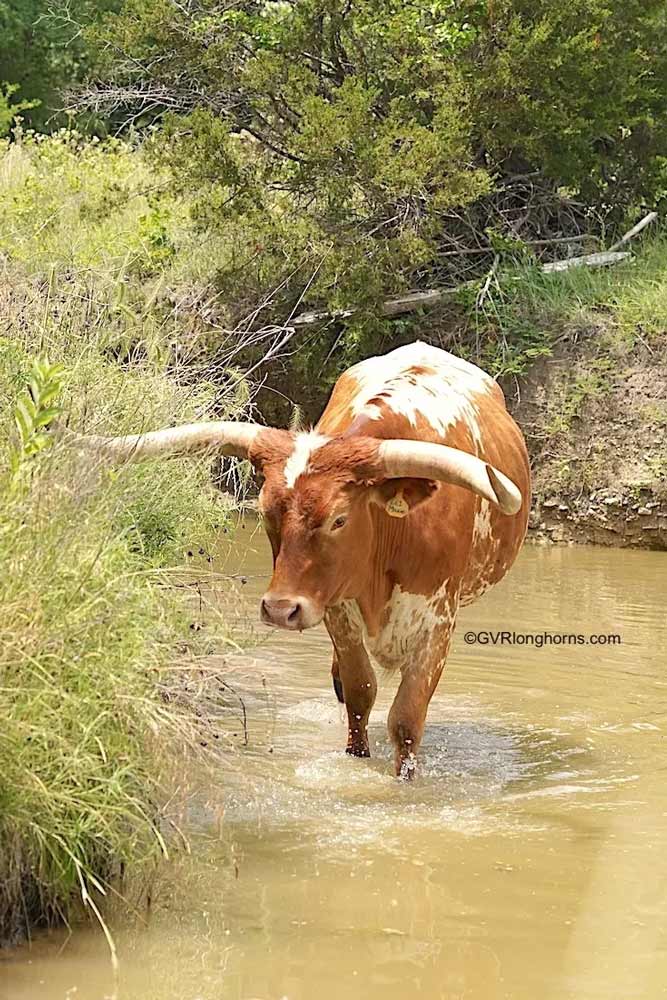
The problem is that in Texas, creeks often run dry. Stock tanks are a good option to ensure water but unless your tank is sufficiently deep it too can face the risk of running dry.
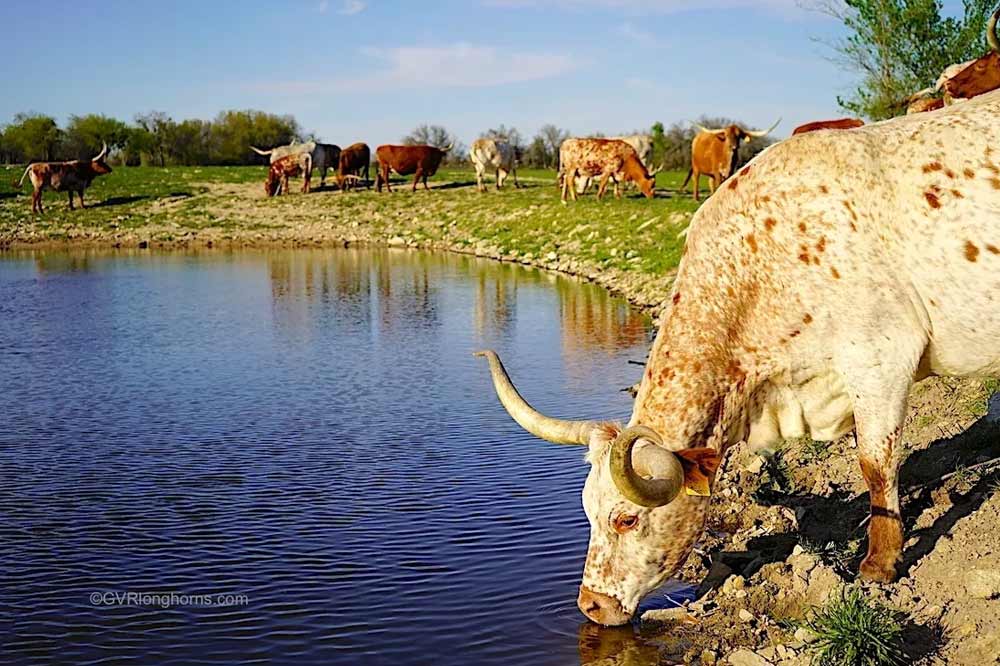
Although we have two natural creeks and three stock tanks (ponds) on our property, we have fresh water in every one of our pastures. (For further reading – 7 points to ponder when building a stock tank)
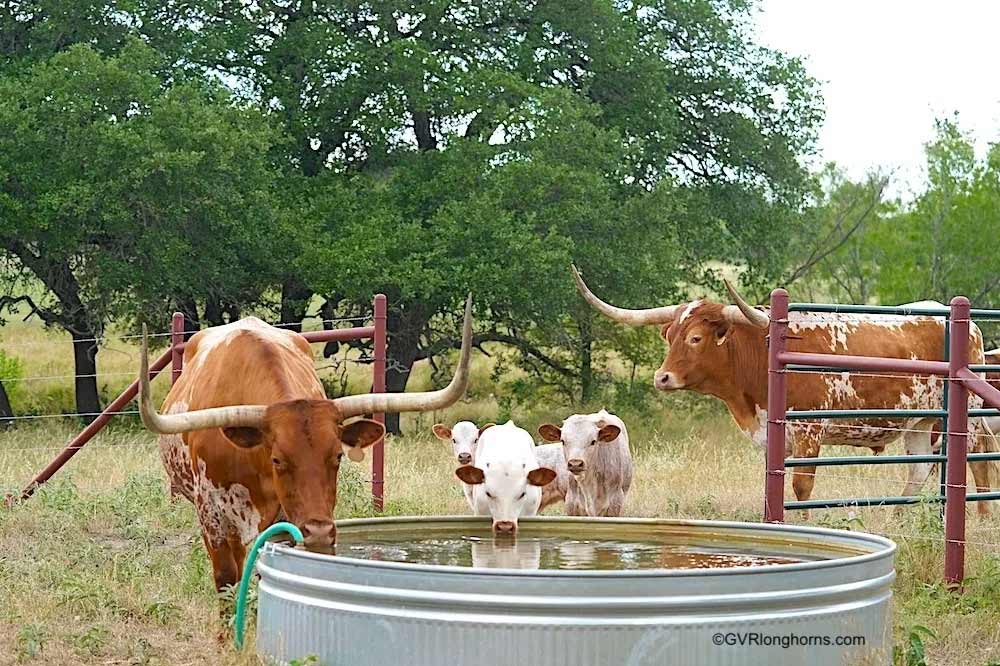
We make use of one galvanized stock tank per pasture. Each stock tank is filled with fresh water from one of our wells. The connection pipes are underground to prevent freezing in winter.
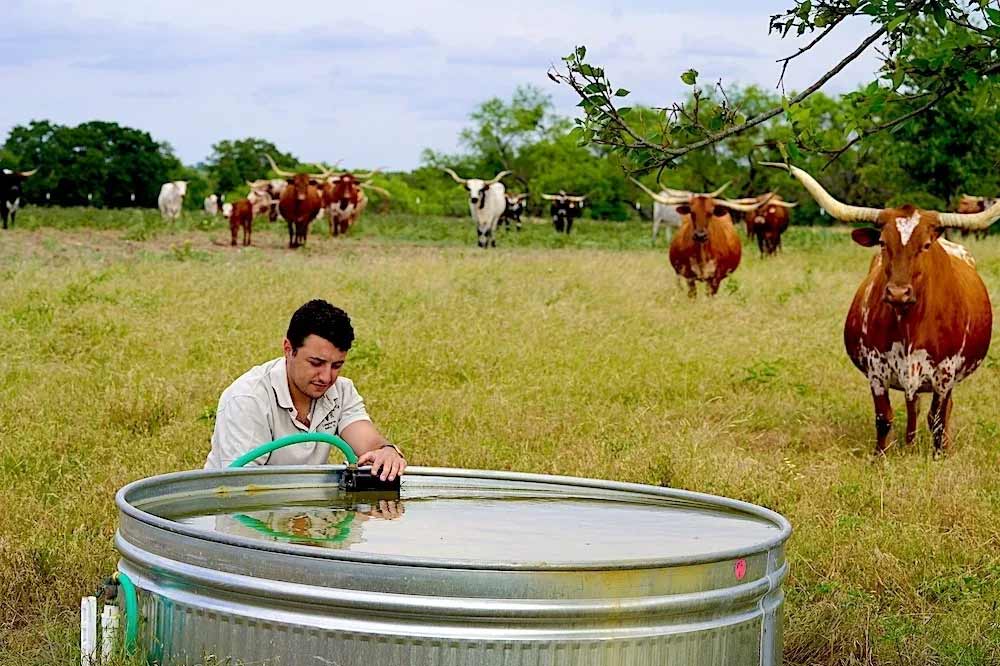
Each tank is fitted with a float valve to maintain a full water level and in winter we use a water heater to prevent ice covering the surface.
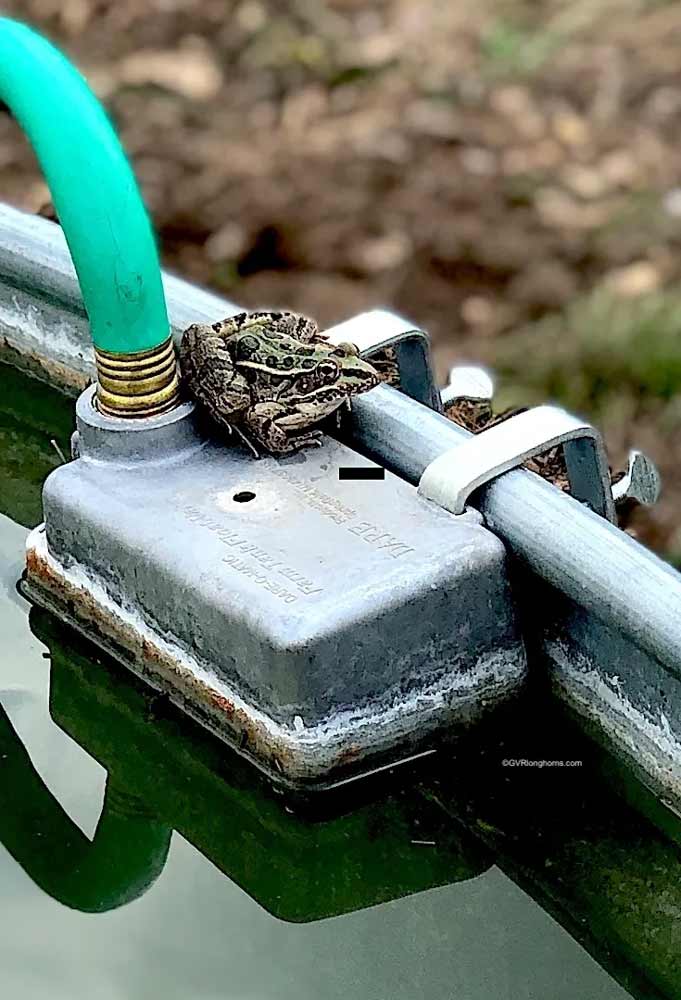
For more on How to Ensure your Texas Longhorn Cattle have water year round, read this BLOG POST HERE
4. Are my fences adequate?
There are many options regarding the materials that cattle ranchers use to secure their Texas longhorn cattle.
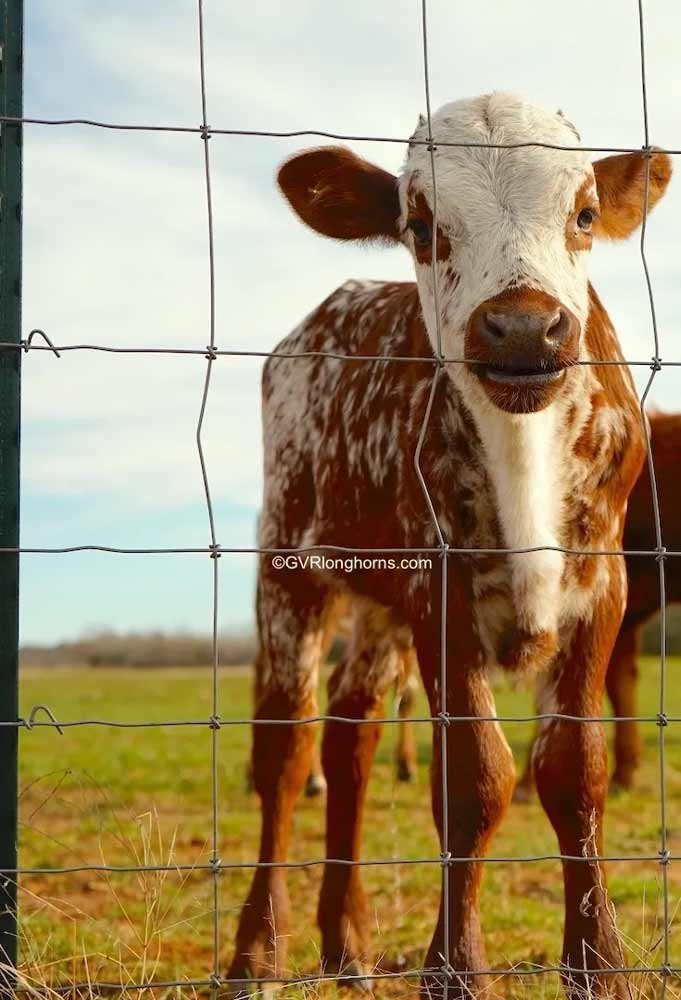
We use a few different materials depending on what our objectives are in the different areas.
For the most part we have five strand barbed wire fencing. Each post is 10′ apart and corners are secured by steel H braces.
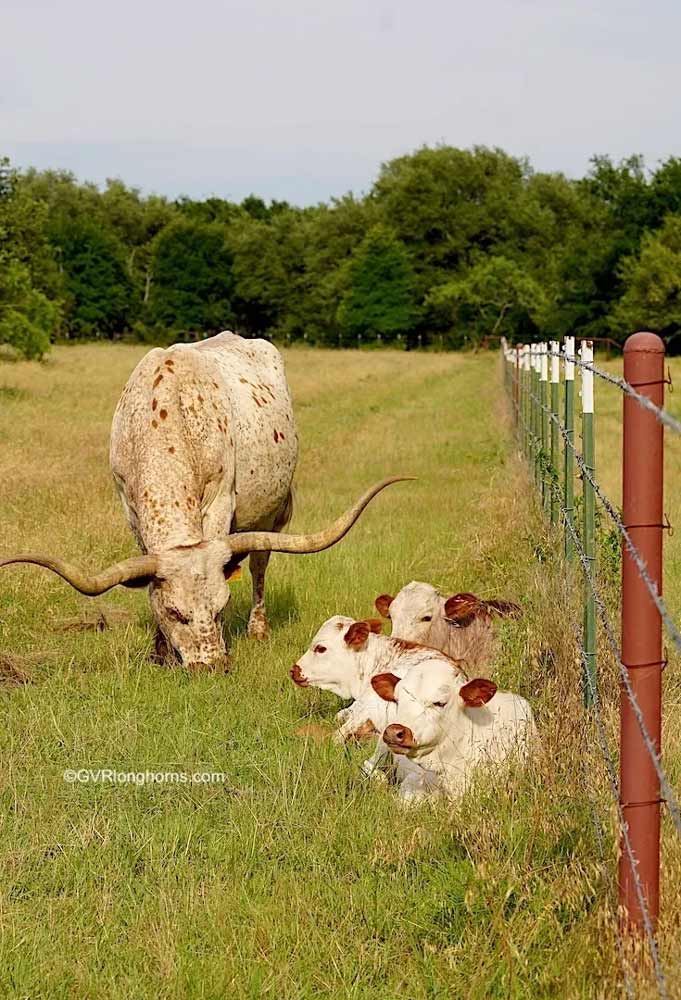
Up until now, we have had no need to electrify our fences. We do, however, maintain our fences to ensure our cattle stay on our property in their specified pastures and other cattle stay out. Many of our fences span over creeks and its these areas that often require more attention than other perimeters.

How to avoid costly fence reconstructions….
before securing a perimeter, here are a few tips to consider ahead of time.
- The entrance to your pasture should be easily accessible. This may sound simplistic but we have moved many an entry. Most times practicality wins over aesthetics and, as I am not the practical one, I won’t say anymore!!
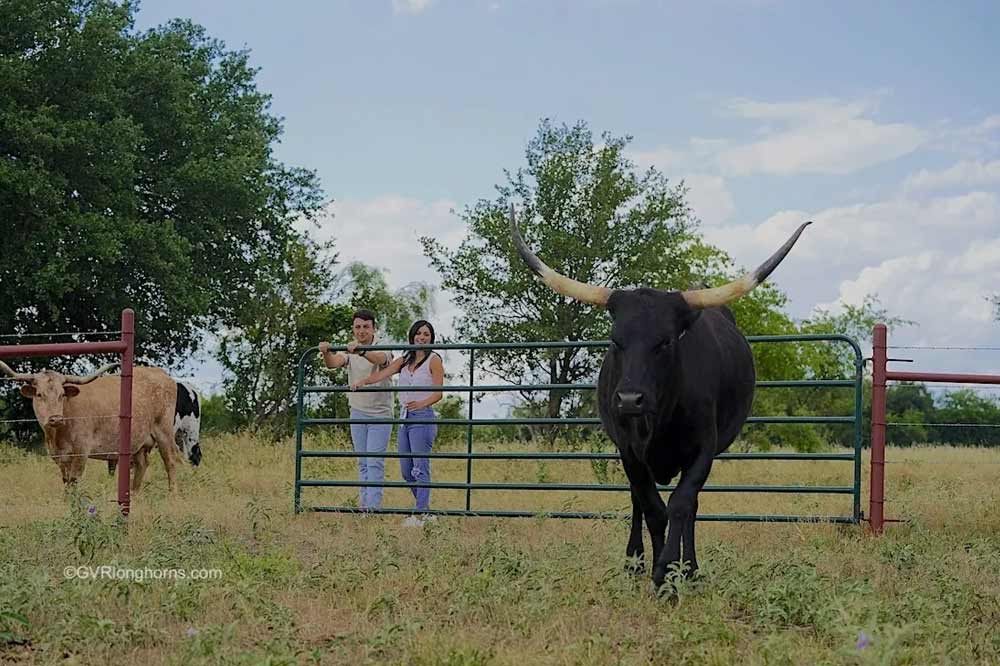
- Gates should be wide enough for farm equipment, whether you are handling hay and managing your pasture yourself or whether you have contractors lined up. We prefer 16′ to 20′ gates.
- If rain water pools around gates, roads or entry ways, an entrance to a pasture could become inaccessible and may need to be moved. Again, this may sound like a no brainer! However, it does not rain an awful lot in Texas and roads and entrances are often planned in dry weather. But we also know that when it rains, it usually pours. Waterlogged paths can turn to mud in a flash, making it difficult to reach your animals.
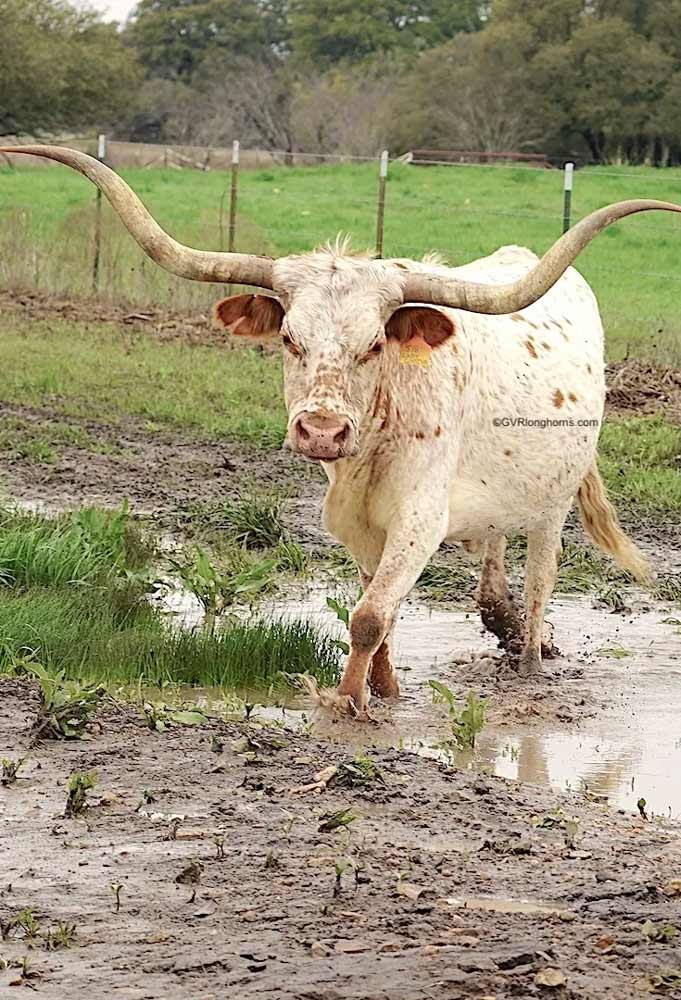
5. What about shelter?
If you have wooded areas and trees with shelter canopies that can break the wind, and protect from the rain, heat and cold your Texas longhorn cattle will be happy.
For added protection they do appreciate cover sheds and will use them but sheds are not essential.

6. Is a corral a necessity?
It is true, not every Texas longhorn cow is like Blackie Bloo, who will let you do anything to her, any time, even in the middle of the pasture.

In reality, unless trained, most Texas longhorn cattle, and sometimes even longhorn calves, are difficult to restrain in a pasture. However, Texas longhorn cattle are more resilient than most other cattle breeds and do not need a lot of attention. It is certainly easier to handle Texas longhorn cattle in a smaller restrictive area.

We now have a funnel system to separate animals from each other, a holding pen for new animals and two chutes, all of which we did not have in the beginning years.
It is important to bear in mind that as Texas longhorns mature, so do their horns. Texas longhorns with wider horns require wider handling facilities. For more on Texas longhorn horns read our Feb 2021 post Texas Longhorn HORNS – Evolution, revolution
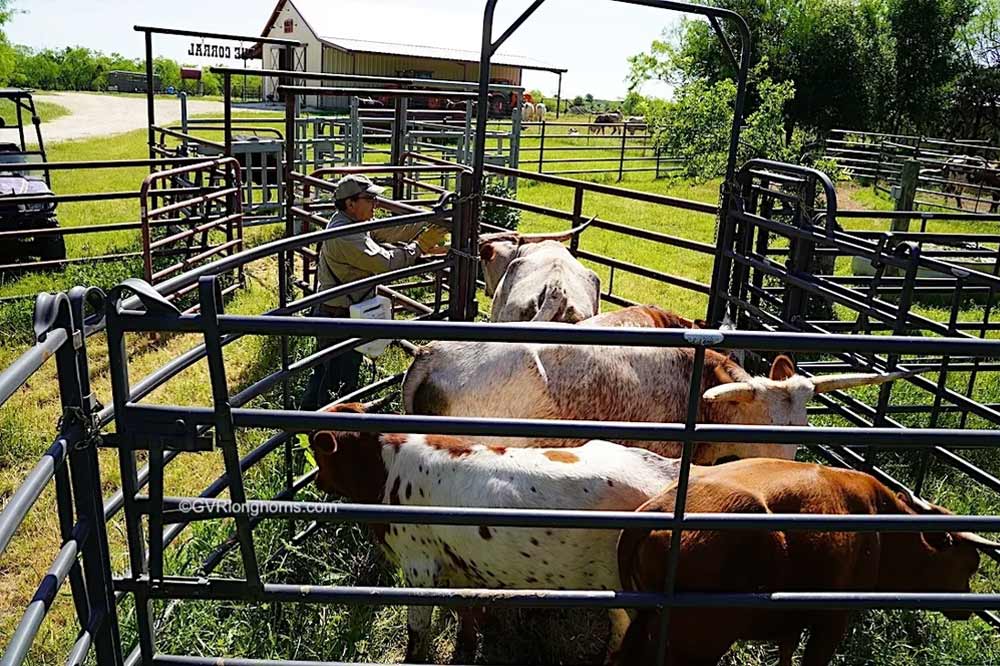
In conclusion
Most often, our customers collect their Texas longhorn cattle from us at Green Valley Ranch. However, on the odd occasion, when Paul delivers animals, he often suggests changes to make things easier for the animals and their new owners. At the very least, secure fencing, fresh water and adequate forage are essential to maintain happy Texas Longhorn cattle. We understand that there are many ways to do the same thing but we are happy to share how we have made things work for us. If you have specific questions or concerns please feel free to contact us.
In addition , read what our customers have to say about owning their own Texas longhorn cattle
Useful links:
https://gvrlonghorns.com/how-to-ensure-your-texas-longhorn-cattle-have-water-year-round
https://gvrlonghorns.com/7-points-to-ponder-when-building-a-stock-tank
https://agrilifeextension.tamu.edu/
https://offices.sc.egov.usda.gov/locator/app?state=tx&agency=fsa
https://www.fsa.usda.gov/state-offices/Texas/index
References:
https://agrilifeextension.tamu.edu/library/ranching/stocking-rate-decisions/
weight.pdfhttps://agrilifeextension.tamu.edu/library/ranching/stocking-rate-
http://counties.agrilife.org/erath/files/2018/08/Ag_Nwslttr_Summer2018_printA.pdf
Confessions from Texas longhorn lovers
For an analysis on recent prices
How much do Texas Longhorn cattle cost? posted June 2021
Texas longhorn cattle cost HOW MUCH? posted July 2020
and many other topics…….
Disclaimer: All material noted above is based on our hands- on experience as ranchers, as well as our observations of our own cattle over the years. We have done and continue to do extensive research in order to maintain our herd‘s optimum health. However, all opinions and statements made on our website are meant as guidelines only. We are not qualified statisticians/ veterinarians and urge you to consult a specialist with your concerns. Content of this blog belongs to GVR Longhorns LLC and may not be copied in any form. ©GVRlonghorns.com All rights reserved.
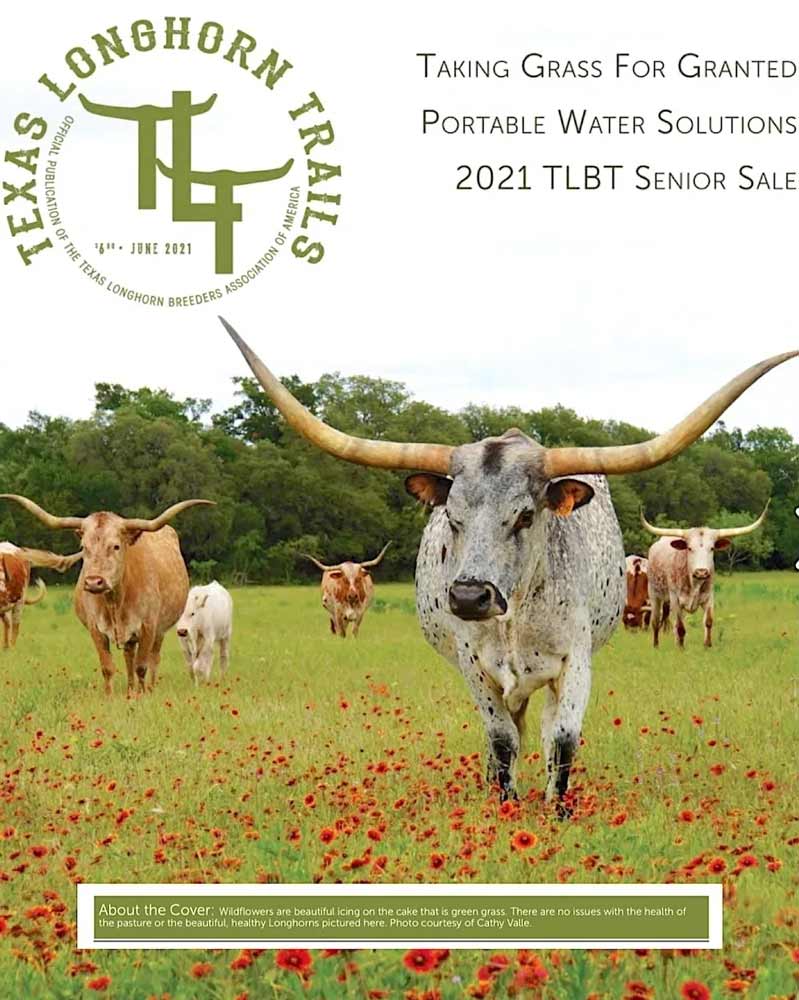
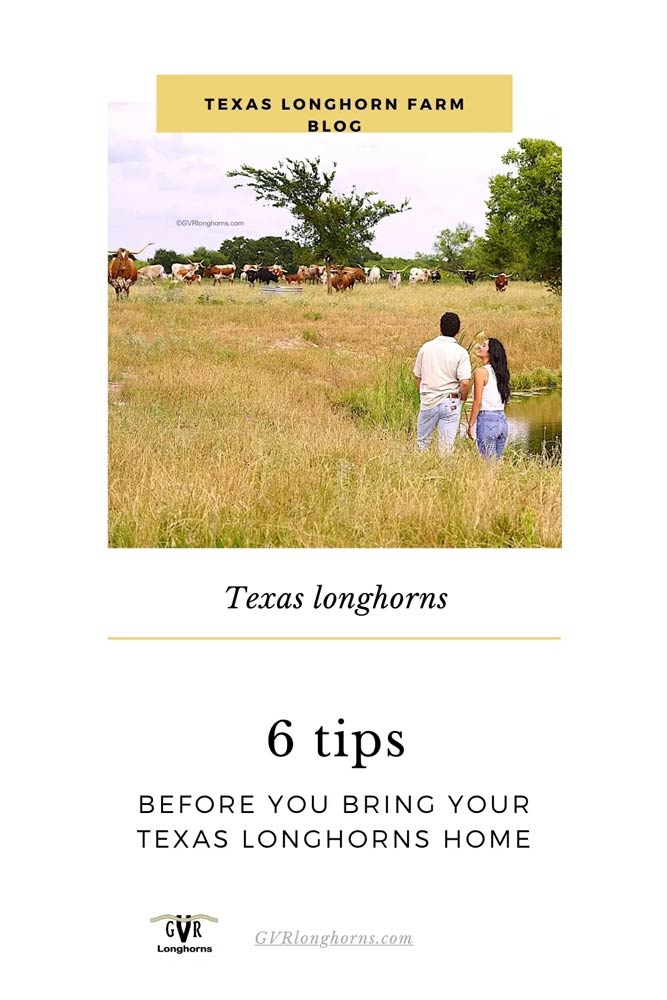

Wanting to start herd
Thank you so much for sharing this information. I’m located in
Combine, Texas and about to start my small longhorn herd. I’m starting out with two heifers a month for the next 4 months. I have 15 acres with a large pond and will be looking out for additional guidance from your staff!! Thanks again.
Julian Castaneda
We appreciate your comment, thanks Julian.